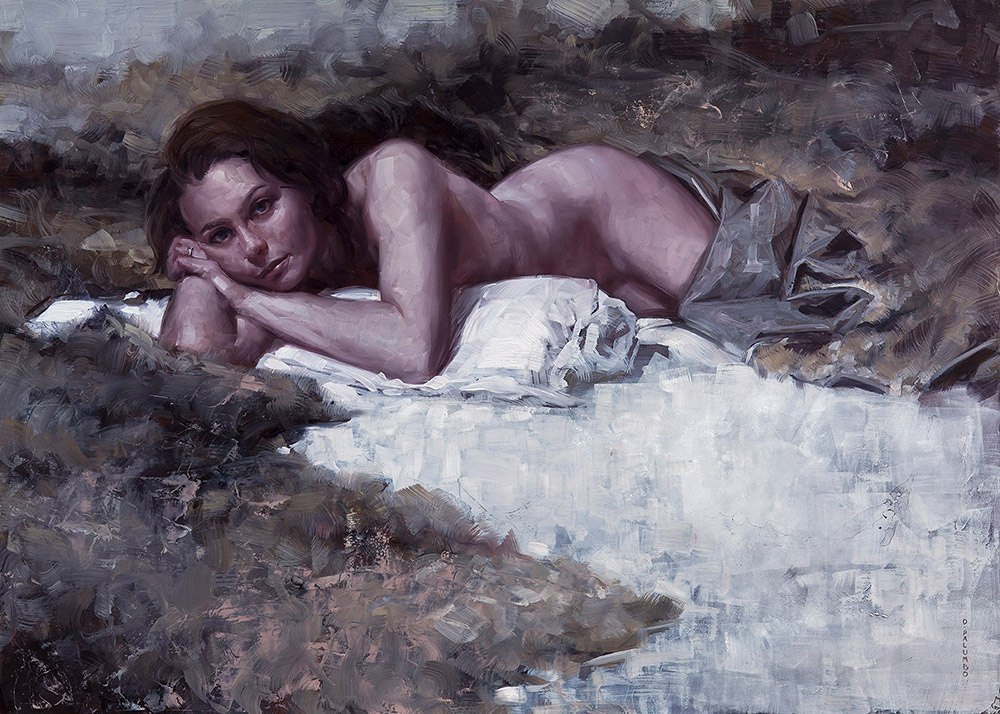 |
| Private commission, 20×28 inches, oil on panel, 2016 |
When I was a student, the only way I wanted to paint was tight and polished, which was a bit at odds with my mostly painterly instructors. I was all rounds and filberts and mops. All painting from the fingertips (as oppose to the shoulder) with teeny tiny brushes. As I was tightening up my skills, however, I started finding myself more and more drawn to N.C. Wyeth and Leyendecker and Mead Schaeffer. For me, I think a big part of the render compulsion was to know that I could do it. As I became more confident in that, however, the process also became more tedious and constricting.
In 2008, I started a series of 5×7 inch figure studies. The idea was to paint a half dozen or so and see how it went. Small pieces meant faster output, which meant less commitment and more opportunities to experiment. Since this was completely separate from my still very young illustration career, there were no outside expectations to worry about. In other words, nothing was supposed to be precious. Those pieces led quickly to an ongoing series (still ongoing, hundreds or paintings and almost a decade later) that slowly slowly slowly began to show results.
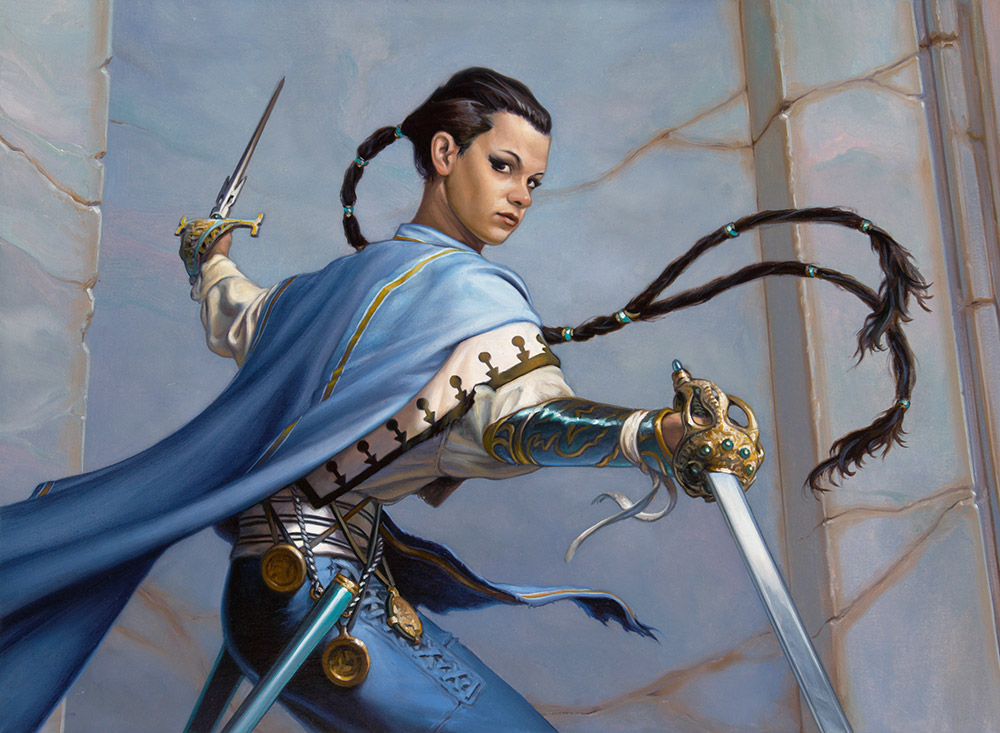 |
| My first assignment for Magic the Gathering. 11×15 inches, oil on illustration board, 2008 |
At the time, the difference seemed huge, but in hindsight that only shows me how hard it is to know where things are leading when you’re in the thick of it. I expect the evolution will continue indefinitely, or at least I hope so. But those early pieces were still pretty uptight, more sloppy than loose. Over time, things started clicking. I started applying the processes I was developing to larger works for my gallery, which I think really accelerated things.
And one day right around Christmas of 2011, I suddenly had enough of the tiny brushes and decided the new process was ready to be applied to the illustrative work. I launched into a new (parallel, for the purpose of transition) portfolio and by the following Christmas, I was fully switched over. In time, I would change the surface I work on, the brushes I used, my underpainting method, my execution process, my relationship with reference, and even the way I create my sketches. None of that planned, each just a natural evolution in service of finding what best fits my needs and aesthetic.
So what have I learned in the time since then?
Develop focal areas first
I’m someone who appreciates expressive marks and abstraction, but still aims very much for realism. More specifically, I look for how the simplification of some information can actually add to the realism in an emotional way. This seems so far to mean working with a sort of abstraction contrast, where some areas are rendered and others suggested, but all stand on an accurate realist framework and value structure. In some ways, it feels to me like the depth of field in a photograph, where your focal area is sharp and defined and the background may be soft and dreamy to really accentuate that focus.
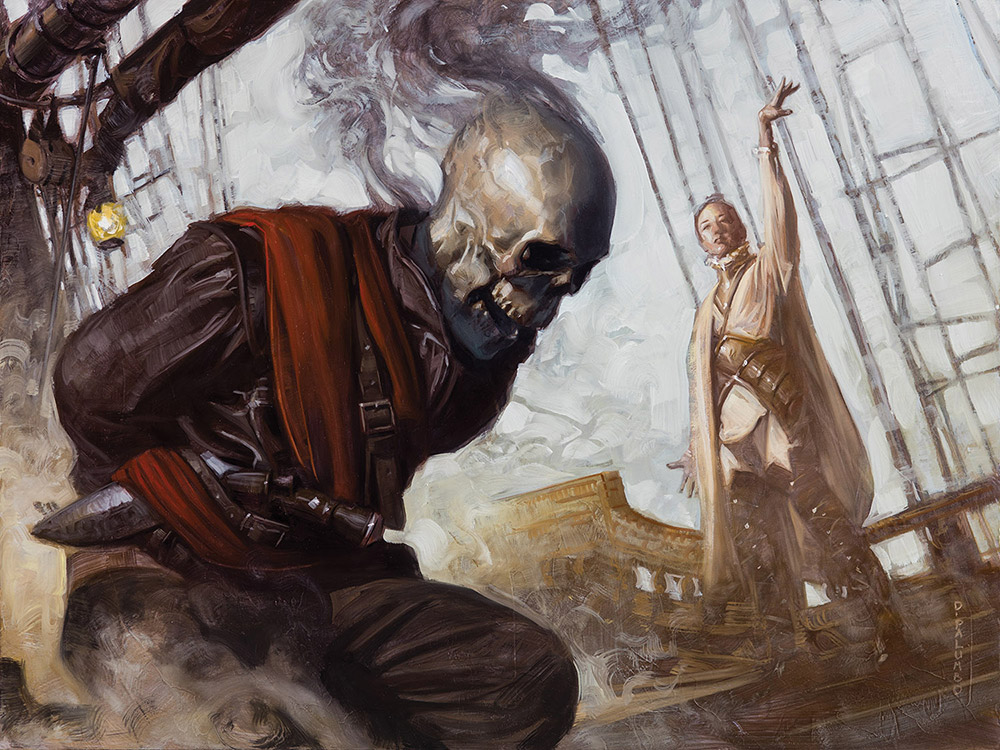 |
| 12×16 inches, oil on panel, 2016. A recent piece for Magic the Gathering |
Because my inclination had always been towards high render, the challenge is to not overcook those supporting and peripheral places. In order to do this, especially as I was making the shift, I prioritized developing my focal areas first and not going much into supporting detail until the focal area was near to finish. This doesn’t necessarily mean foregoing a global approach (working all over at the same time to maintain color and value consistency), but if I do work into the supporting areas I’ll keep it very general in early stages. The reason is that I usually don’t need to do as much as I’d have thought. When the focal area is working, it carries the weight. If I painted the backgrounds first (as I used to do), I would overcompensate for everything still looking raw by making unimportant things more finished. When that focal area is really singing though, it’s amazing how much suggestion can do the job. The render contrast that results gives life and energy to the piece.
Paint with the urgency of a live session
One of the bad habits of a tiny brush process is a tendency to noodle. I don’t want to noodle though. Noodley brush strokes lack confidence. If I find myself noodling, it’s time to get a larger brush and break down the form into more basic shapes and see how simple I can make it.
An even better habit is to avoid noodling from the start by thinking carefully about the stroke buildup. I took this lesson from watching Burt Silverman demo portraits. When working from life, there is a ticking clock to get what you need down on your surface. Burt is an absolute master in this regard. He described it as looking at each brush stroke being the most critical at that moment. Each new stroke adds just one more piece of information, gradually less important the further along you go. If time allows, you can keep adding, but it is driven by the urgency of the ticking clock that may stop at any time.
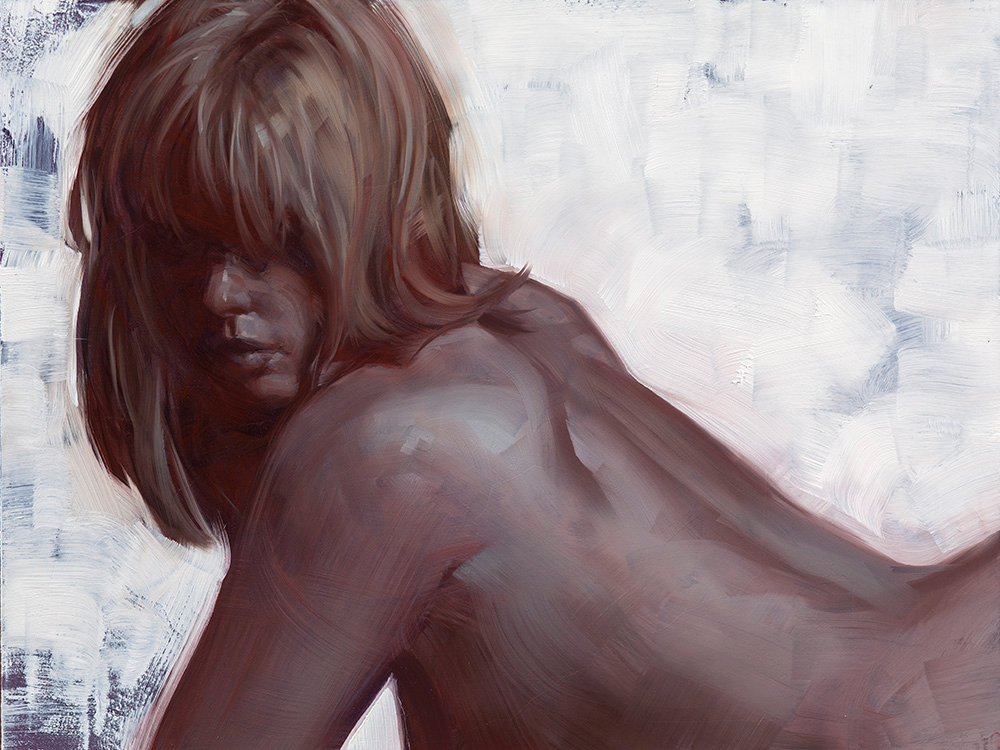 |
| Personal work, 9×12 inches, oil on panel, 2015 |
To be clear, this is not about trying to work faster. That will actually backfire you if you don’t have the basics already under control because you will make early mistakes, and the early strokes are the most important. This is about working carefully and thoughtfully. Whether it’s a five minute or five hour portrait, it will have accuracy and confidence. The only difference from a long or short pose would be how much nuance and additional information there is.
A precise structure gives your later strokes freedom
Following the concept that the earliest strokes are most important, having an accurate underpainting or drawing is essential for me. When I’m confident that the structure is there, I can lose edges, abstract form, and play with strokes without worry about losing the anatomy or shapes. If the drawing is right, make sure the values are right. If the values are also right, you can distress, deconstruct, obliterate, and simplify and it will still hold together.
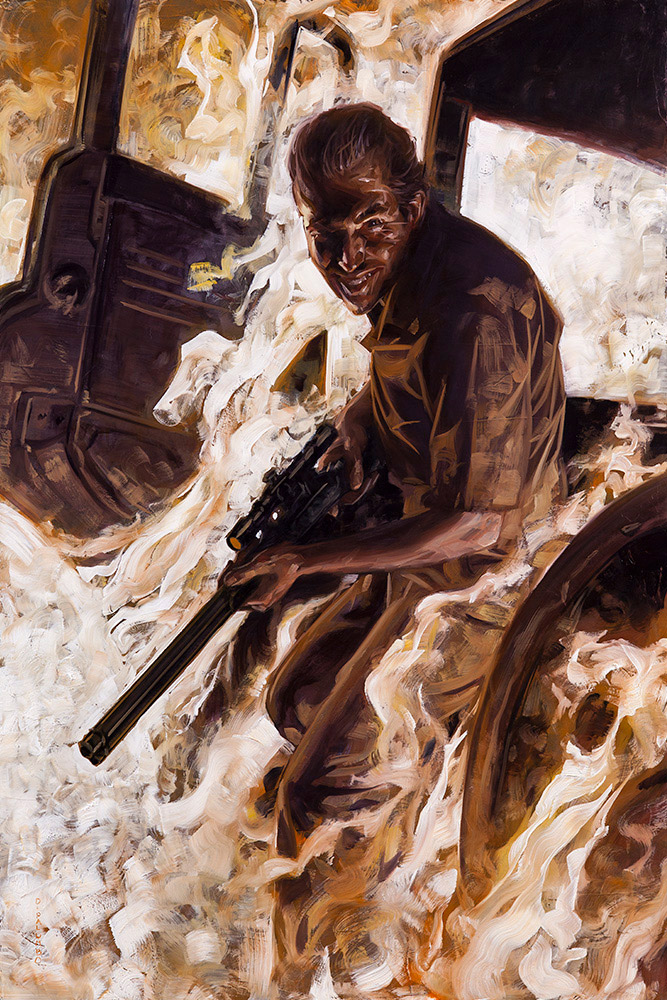 |
| 16×24 inches, oil on panel, 2015 |
Bigger brushes are your friend
It’s difficult to go into complex areas with big brushes, because it’s going to probably mean eliminating a lot of the details. That’s ok. You can always work them back in if you need them, but laying out general abstraction should come first. If you are or used to be a tiny brush painter like me, big brushes help force the issue. And again, as mentioned above, they are a life saver when you get an attack of the noodles.
Fear holds you back
The hardest part of any of this is letting go of the fear that something will look unfinished, half-assed, or sloppy. And, you know, it might. But the fear of being seen as a lazy painter has generally been one of my biggest struggles. It’s possible I worry about this because I definitely can be a lazy painter, but that doesn’t mean everything needs to be difficult or take a certain minimum number of hours in order to be effective.
My favorite pieces from many other artists are more about simplification than labor. I don’t criticize their economy though. The economy is what usually makes them so exciting.
There is also fear of ruining a piece if you want to try something bold or potentially destructive, but I’ve found that risk almost always pays off. Sometimes it ends up being more work than I thought to bring it home, but the end result is almost always more interesting that the safer road likely would have been.
All that said, I think it’s very easy to see a difference in how willing I am to take those risks or leave areas more suggested in my personal works than in my commissions. I’m still fighting the fear when I have a client to please. Little by little though, my personal work leads the way and my commissioned work eventually follows. This is why I maintain that making time for the personal experimentation is so valuable to overall growth. If I hadn’t set aside an afternoon for some 5×7 figure studies back in 2008, who knows where I would be today?


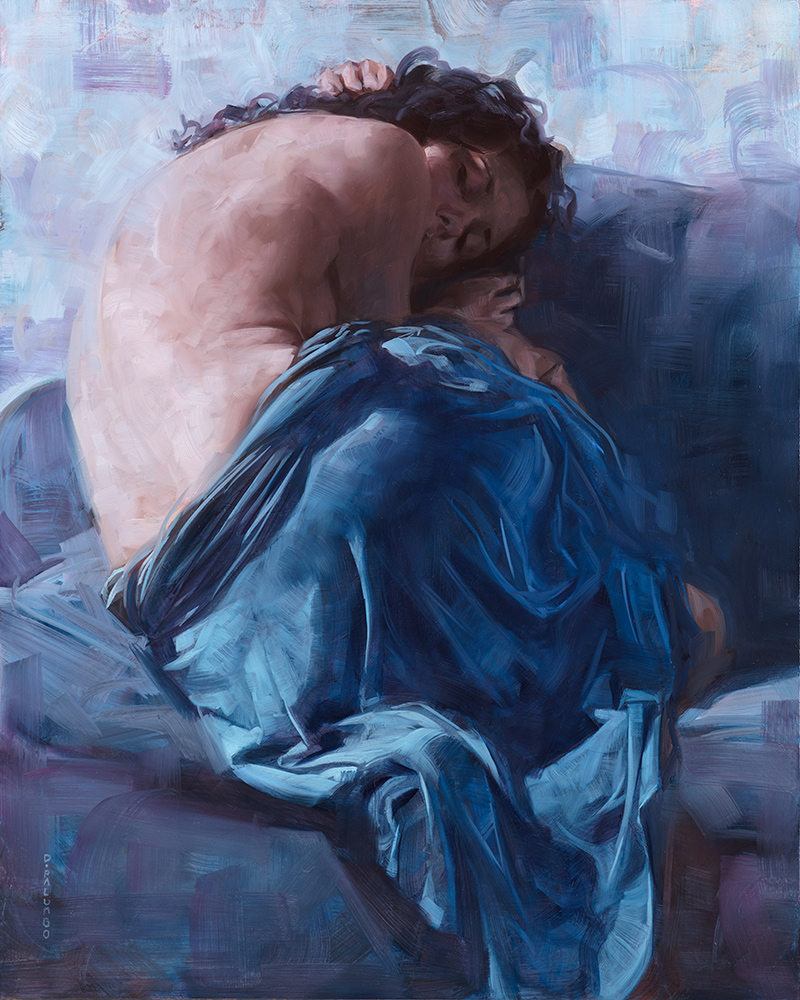

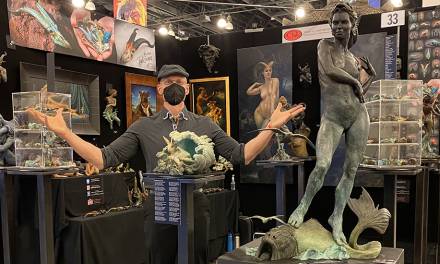
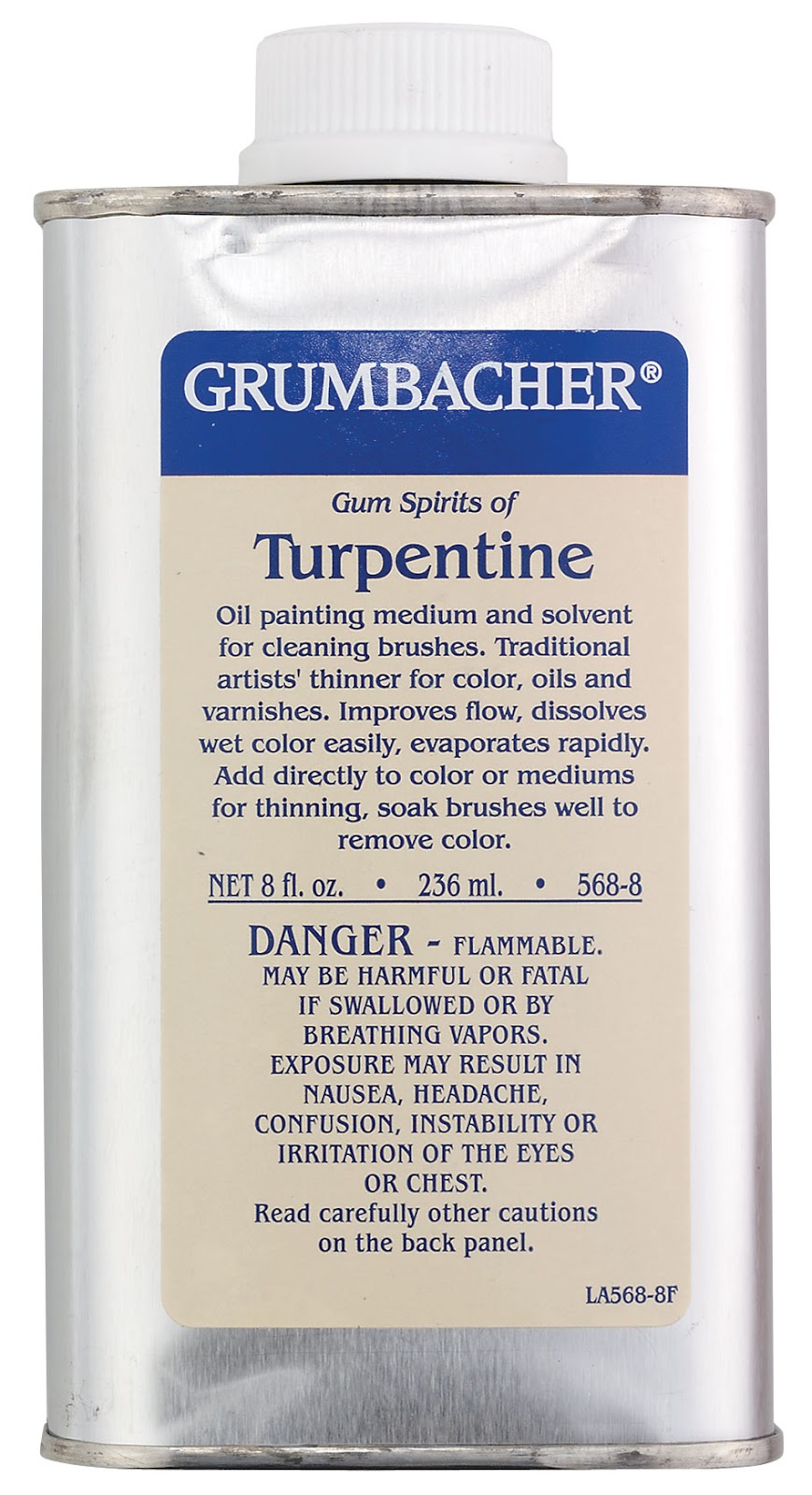
![[Anti] Social Media](https://www.muddycolors.com/wp-content/uploads/2017/12/eeeff-1931_frankenstein_img28.jpg)
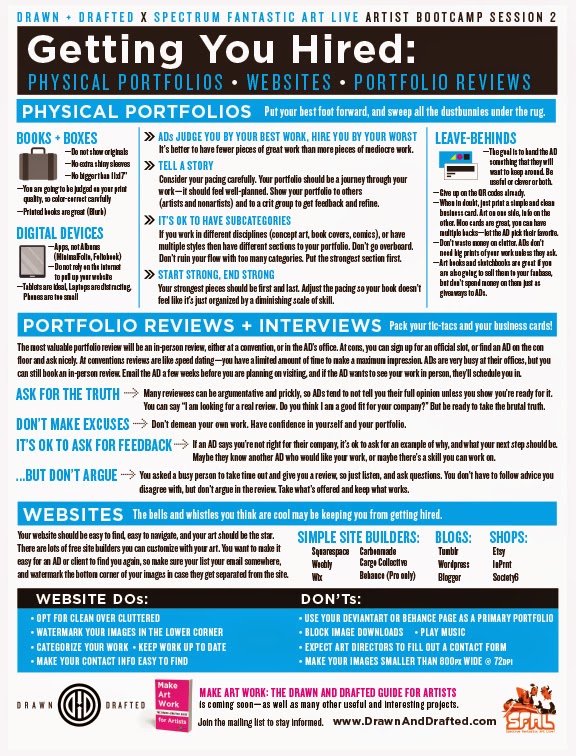
Superb article! Thanks for sharing.
Very relevant to myself as starting a new, highly detailed piece has been infusing me with paralysis. Inktober helped and this write-up may just be the final push. Thanks!
I've been using cardboard in an effort to help me achieve my “bold, experimental” approach, and I think it helps. I raid local dumpsters, find the “good stuff,” cut several to the size I want, and cover with acrylic matte medium. The brown of the cardboard represents a toned canvas, and I slather away with paint on larger brushes. My confidence is going up, and I wish some of those little paintings were on board or canvas. It's a cheap way to try new things. Thanks for your article. It is on target and helpful.
That is a great idea, thank you! Maybe using old brushes or even a palette knife, as well as medium quality paints could also help overcoming “wasting precious” materials?
Glad to hear it, thanks!
yeah, I find it's really good to disconnect the cost of materials from their use. Of course, that's definitely easier with cheap materials 🙂 I remember cardboard was a popular surface for studies when I was in school
Fantastic articel. Very useful, since I am struggeling with the same thing.
I've been thinking about this article for a few days, especially the starting out back to front, then moving to focal area to background.
I first learned, develop the focal area first, then took another class where we did the background first.
Seems like there are merits to both processes, and I think you really nailed the process of working on the focal areas, but working on the entire painting at once. So rather than focal to background, or background to focal, it's more like both in a controlled form of chaos.
Really great article and advice, I’ve been working on a painting for a while now and transitioned from tiny brushes to bigger ones mid painting, I had to paint over a lot of detail but I found out it looked better that way anyway.
David, two questions: 1. I gather this posted originally in 2017. Have your views modified in any respect in the six or so years hence? 2. In doing the 5 x 7 studies, what brushes did you wind up using–what’s a “big brush” for a 5 x 7?
Where would one find your initial 5×7 studies?
This is great. Exactly what I’m struggling with and I thought others may have the same 🙂 Thanks for sharing!
Hey Sarah Finnigan, his books Quickie and Quickie2 on his website are collections of his loose studies.
Hey David, where did you get the photo reference for your studies? I’ve thought about doing the same thing but it seems stealy to use photos I find, and I don’t have the $ to photograph models myself.